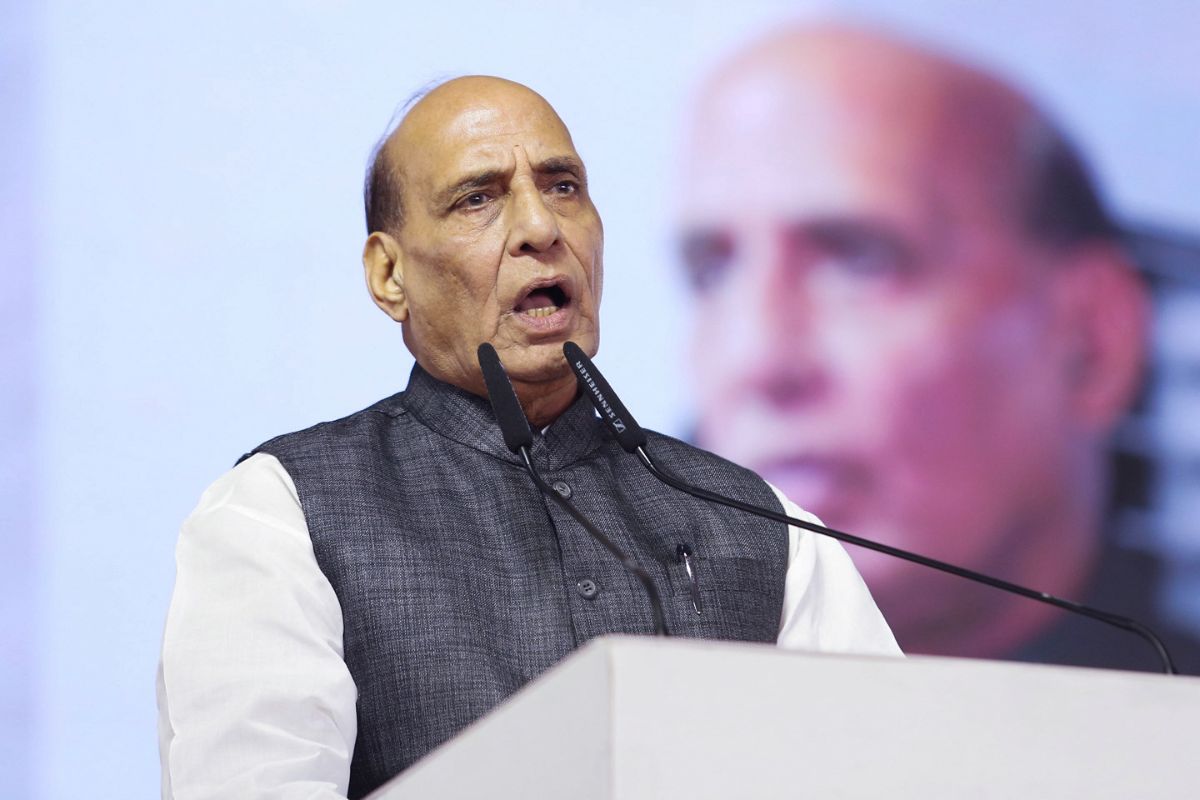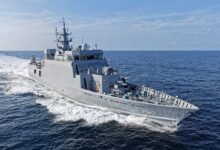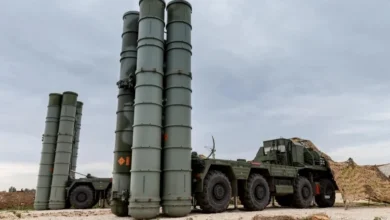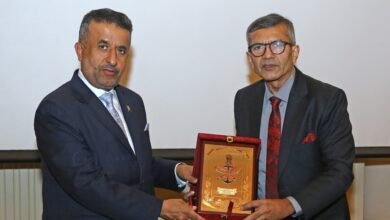Rajnath Singh Asserts India’s Resolve On Maritime Security: “We Will Not Shrink From Countering Any Threat”

- The Indian Navy has created MITRA terminals with the Nishar program to connect all friendly partner navies, according to the defense ministry.
- The current version of the practice started on February 19 and will end on February 23. The harbor phase began on February 19.
India is staying in the strategic seas to make sure that all cargo ships are safe and secure, and Defense Minister Rajnath Singh said on Wednesday that India will not back down from fighting any threat that threatens the region’s overall health.
His speech at the official start of the Milan naval drill in Visakhapatnam came at a time when the world was growing more worried about the Houthi militants’ attacks on commercial ships in the Red Sea.
In the Western Indian Ocean, the Indian Navy has helped a number of cargo ships that were attacked in the past few weeks.
Singh pushed for peace and shared goodness, but he also said, “We will not be afraid to fight any threat that threatens our collective well-being, including piracy and trafficking.” The defense minister talked about the recent events in the Western Indian Ocean and said they have brought to light some important problems in the maritime domain, such as attacks on commercial ships, piracy, and attempts to take over ships.
“India continues to be proactive and has been maintaining a sustained presence in the region to ensure the safety and security of all shipping, no matter what flag the ships fly or who works on them,” he said.
India is determined to be the best security partner in the Indian Ocean Region, according to the defense minister.
“We will always be ready to be the first responder and the best security partner in the Indian Ocean Region,” he said. “We want peace, stability, and prosperity in the Indo-Pacific as a whole.”
Singh said that India will keep being a “Vishwa Mitra,” or friend of the world, by making real partnerships that will help make the world a “connected and fair habitat.”
He said this at the official start of the 12th version of the mega naval exercise: “The world community must collectively strive for peace in this age of rules-based global order.”
At the event, Navy Chief Admiral R Hari Kumar was joined by ministers, ambassadors, heads of navies, and representatives of maritime forces from more than 50 friendly countries.
The defense ministry says Singh said that the “absence of wars and conflicts is the most irreducible minimum element of peace” when he talked about what he thought about the word “peace.”
He said that “negative peace” is often caused by control or hegemony, which means that one power forces its will on other powers.
He said that this kind of peace that isn’t based on fairness and justice is known as “unstable equilibrium” in the fields of physics and economics.
The defense ministry said in a statement that Singh talked more about what he called “cold peace,” which means that people don’t kill each other in public but do their best to hurt each other.
He said that a “cold peace” was just a break between direct battles.
The defense minister thought that “positive peace” meant more than just not having any direct armed conflict. He thought it also meant safety, justice, and working together.
“The good peace is the peace that everyone shares and works together to achieve.” There is no peace in India, Australia, or Japan. Instead, he said, “we all share the peace of the world.”
It was also our Prime Minister Narendra Modi who said it so well when he said, “This is not a time of war.” “But it is one of peace and conversation,” he said.
Singh stressed that the military has two jobs: to fight wars and to keep the peace and order the country.
“In the past, navies and armies were built and kept up with the main goal of expanding political power through military conquests,” he said.
“From what we know about history, the armed forces also play a big part in keeping the peace.” “It can be seen in ideas and actions like deterrence, preventing conflict, keeping the peace, and many types of humanitarian aid, especially during disasters,” he said.
The defense minister said that the Milan drill was an effort to strengthen the bonds between friendly countries, which are very important.
In his speech, Admiral Kumar said that the Milan drill brings back to life the spirit of “Cohesion, Camaraderie, and Collaboration.” He said that the fact that there are now 50 navies in the Indo-Pacific, up from five in the Indian Ocean in 1995, shows how important it is for countries to work together on marine issues.
Admiral Kumar said that the sea part of the exercise, which starts on February 24, will include both Indian and foreign warships traveling together and taking part in a variety of operational drills.
In addition, he said, “These are not just naval exercises; they show how strong and skilled we are as a group as maritime nations.”
The defense minister launched the NISHAR communication device at the event.
The Indian Navy has created MITRA terminals with the Nishar program to connect all friendly partner navies, according to the defense ministry. This is because communication is a key part of interoperability.
Milan is a multinational naval practice that happens every two years. It began in 1995 with Indonesia, Singapore, Sri Lanka, and Thailand taking part, in line with India’s “Look East” policy.
The current version of the practice started on February 19 and will end on February 23. The harbor phase began on February 19.
During the harbor part, there will be an opening ceremony, an international city parade, an international maritime seminar, the Milan Tech Expo, and a table top exercise, among other things.







Facebook Comments